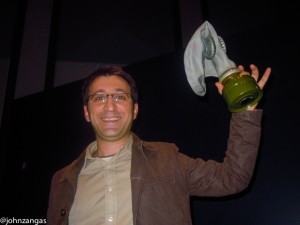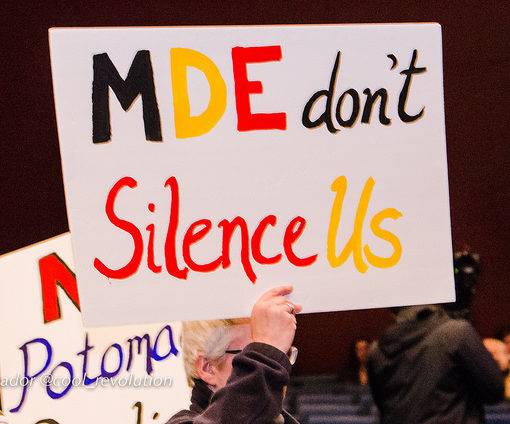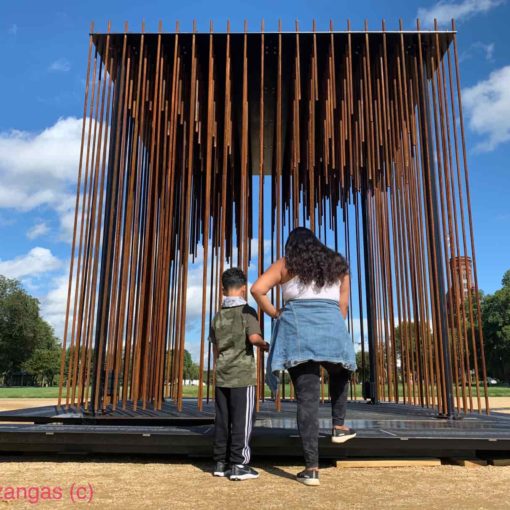
By Anne Meador
“We wanted to make sure that people leave this film with a sense of hope,” says director Serkan Koç at the U.S. premiere of his documentary The Beginning (Başlangıç) in Washington, DC on December 7. A film about the Turkish people’s uprising against the government of Tayyip Recip Erdoğan in the summer of 2013, it could have easily never seen the light of day.
Koç and his staff were up against the censorship of the Turkish government. Prime Minister Erdoğan was determined to suppress as much coverage as he could of the Gezi Park sit-in and subsequent protests in Istanbul and around the country. In fact, CNN Turk–under the government’s influence–famously and ridiculously aired a documentary about penguins while CNN International was showing scenes of police attacking protestors. Social media was a main outlet for images and news of what was happening, but photos and videos were often taken down almost as soon as they were uploaded.
Police raided the production company’s office and confiscated their footage and equipment, but fortunately they had prepared for that contingency by making digital copies. After the film was completed, the Turkish film industry wouldn’t distribute the film, and theaters refused to show it due to government pressure. Koç and his supporters went to cities and villages around the country with projectors stuffed in backpacks to screen the film themselves.
Eight videographers contributed footage of the protests in Istanbul and around the country at great risk to themselves. “We were one with them [the protestors],” Koç said. “Whatever they went through we went through.”
One would never expect the green trees of Gezi Park, one of the last open spaces on the European side of Istanbul, to set in motion a nationwide uprising against encroaching dictatorship. The vicious dispersal by police of an environmentalist sit-in objecting to Erdoğan’s planned redevelopment of the park brought thousands there and to adjacent Taksim Square.
At first, we see a utopian occupation–people sharing food, goods and necessities in free markets, and getting medical services. Art, graffiti, and slogans denouncing “Tayyip” appear on walls, streets and signs.
Koç takes many opportunities to distinguish the protestors from an unruly mob, “looters” as Erdoğan tries to portray them. (They later appropriate the word “looters” or çapulcu for themselves.) As riot police line up, women give them pink carnations.

Protestors are seen trying to keep outliers in check, admonishing each other to stay calm, and refraining from throwing rocks and other objects at police.
As the police build-up escalates and the crackdown begins, events unfold with a sickening inevitability. Unarmed people have little recourse against the so-called “non-lethal” weapons of crowd control. Police with full protective gear ensconced in helicopters above and armored vehicles on the streets unleash tear gas, torrents of water laced with burning chemicals, rubber bullets, projectiles like nuts and bolts, and more tear gas. Because of the enormous amounts of tear gas used, the gas mask became an iconic symbol of the protests.
People lose eyes as the result of direct hits from tear gas canisters and other projectiles. Where there are no doctors, comrades triage the injured in a mosque.
Erdoğan proves himself a despot with his unrestrained assault on the protestors and his apparent pleasure in doing so. “Our police forces have written an epic story,” he says.
In watching the film, some questions arise that apply not just to the Turkish resistance but to the people’s resistance worldwide against government collusion with corporate hegemony and the global elite’s hoarding of wealth. With terrorism as the pretext, every government has paramilitary forces at the ready. How do we preserve public spaces and the right of people to assemble there? When even democratic and “free” societies feel at liberty to quash dissent, how do we preserve our rights to free speech and free association? What can people do when faced with overwhelming force?
The Gezi protests at least show us a demonstration of resolve, creativity and solidarity in purpose. The Turkish people have a passionate feeling for their country and its history as a secular state.
The film’s title, The Beginning, should of course tip you off that Koç wants you to view what you see as events in progress rather than a history and interpretation of past events. Since there’s no narration and the film doesn’t provide much context, the viewer who is unfamiliar with what sparked the Gezi Park protests should bone up on some basic facts beforehand.
The Beginning is above all a film for Turks–to fend off despair and muster courage for the future. “I wanted to make sure that people who watch this film get out and finish the job that has been started,” Koç says. His intent is to inspire Turks to “move forward” to the next step in deposing Erdoğan.
“Because as Turks we started something, but we left it unfinished. Now we are on the road to finish it.”
DVD’s of “The Beginning” will be available to order at www.theexpose.org beginning on December 12, 2013. You can also visit the Facebook page of 49/51 Film for more information.
Interview with Director Serkan Koç and assistant Beste Gül Öneren:





